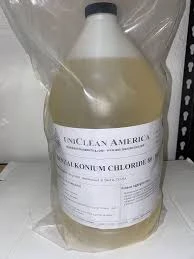The Role of Polyaluminium Chloride in Effective Water Treatment Processes
Polyaluminium Chloride in Water Treatment An Overview
Water treatment is an essential process that ensures the safety and quality of drinking water, industrial water, and wastewater. Among the various chemical coagulants used in this process, Polyaluminium Chloride (PAC) has gained significant prominence due to its effectiveness and environmental benefits. This article explores the role of PAC in water treatment, its advantages, and its application processes.
What is Polyaluminium Chloride?
Polyaluminium Chloride is a synthetic polymer-based coagulant that consists of aluminum chloride and aluminum hydroxide. It has a complex structure that can vary in its composition and molecular weight. PAC typically appears as a white, yellow, or light brown powder, and it is soluble in water. It is available in various formulations, with differing aluminum content, to cater to specific treatment requirements.
Mechanism of Action
The primary function of PAC in water treatment is coagulation, a process where small particles aggregate to form larger clusters known as flocs. When PAC is added to water, it dissociates, releasing aluminum ions. These ions neutralize the charges of suspended particles, such as organic matter, silt, and microorganisms. As these charges neutralize, the particles start to clump together, facilitating their removal by sedimentation and filtration. This mechanism not only aids in clearing the water but also improves clarity and reduces turbidity.
Advantages of Polyaluminium Chloride
1. Effectiveness PAC is highly effective at a wide range of pH levels, making it versatile for different water sources. Its coagulant properties improve the removal of suspended solids, color, and organic matter, resulting in clearer water.
2. Lower Dosage Requirements One of the primary benefits of PAC is its lower dosage requirements compared to traditional coagulants such as alum (aluminum sulfate). This means that facilities can use less chemical while achieving similar or improved treatment results, contributing to cost-effectiveness.
3. Improved Settling Rates The use of PAC leads to faster floc formation and improved settling rates. This efficiency can decrease the time required for sedimentation processes, which is crucial in large-scale water treatment plants.
polyaluminium chloride water treatment

4. Reduced Sludge Production PAC tends to produce less sludge than traditional aluminum salts. This reduction in sludge volume can lead to lower disposal costs and a decreased environmental footprint associated with sludge management.
5. Compatibility with Other Chemicals PAC can be used in conjunction with other coagulants and treatment processes, which allows flexibility in developing effective water treatment protocols tailored to specific needs.
6. Lower Risk of Aluminum Residuals When used appropriately, PAC reduces the amount of aluminum residuals in treated water, addressing some public health concerns associated with aluminum exposure.
Applications of Polyaluminium Chloride
PAC is widely utilized in various water treatment processes, including
- Drinking Water Treatment Municipal water treatment facilities often incorporate PAC in the coagulation and flocculation stages to ensure safe drinking water for the public. - Wastewater Treatment PAC is effective in treating industrial and municipal wastewater, helping to clarify effluents before discharge into natural water bodies.
- Industrial Processes Industries that require high-quality water, such as food and beverage processing, pulp and paper production, and chemical manufacturing, also employ PAC in their water management strategies.
- Swimming Pool Maintenance PAC can be used for clarifying swimming pool water, as it effectively removes contaminants and enhances water quality.
Conclusion
Polyaluminium Chloride is a vital component in modern water treatment processes, offering numerous advantages over traditional coagulants. Its effectiveness, cost-efficiency, and reduced environmental impact make it a preferred choice for many water treatment facilities worldwide. As the demand for clean and safe water continues to grow, the importance of PAC in ensuring water quality will remain critical. Understanding and implementing effective water treatment solutions like PAC is crucial not only for public health but also for environmental sustainability.
-
Water Treatment with Flocculant Water TreatmentNewsJun.12,2025
-
Polymaleic AnhydrideNewsJun.12,2025
-
Polyaspartic AcidNewsJun.12,2025
-
Enhance Industrial Processes with IsothiazolinonesNewsJun.12,2025
-
Enhance Industrial Processes with PBTCA SolutionsNewsJun.12,2025
-
Dodecyldimethylbenzylammonium Chloride SolutionsNewsJun.12,2025





